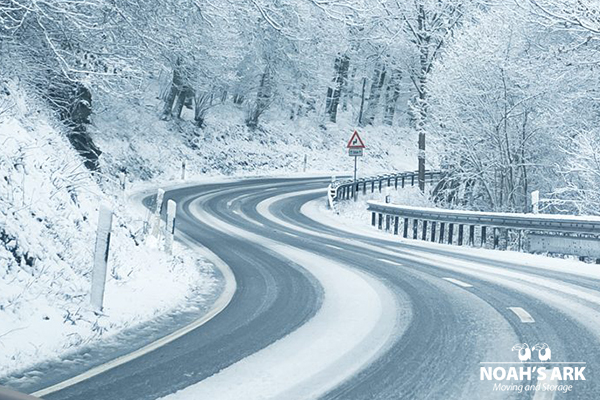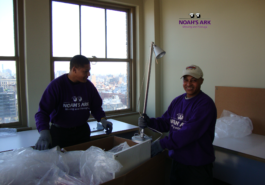 A Positively Moving Experience
A Positively Moving Experience

Moving in the Snow

Winter is a great time to move – it’s cheaper than other seasons and easier to rent trucks or hire a moving company. However there possible weather related issues that need to be addressed; in this blog entry, I’ll detail some of them.
New Home:
Heat and Lighting
Make sure that all utilities including heat and energy are set up at your new location and fully working before you arrive. We recommend making sure the heat and water are turned on before you arrive, and to make sure the house is warm on the day you move in.
Clear off Snow
Make sure the sidewalks and driveway at your new location are cleared from ice or snow. It’s smart to visit the location if possible the day before to make sure that the walkways aren’t snowy or icy – and if you’re not nearby, ask your agent or property manager to do so. It will make the move in much safer and easier.
Make sure Parking Spots are Clear
Make sure that there’s room for the moving truck to park right in front of your new property – this will make the move much smoother, and minimize any chances of property damage.
Your Old Location
Clear off Snow
Make sure that all sidewalks and driveways are free of snow or slippery ice – this will lead to a safer work environment, and allow the use of dollies if needed.
Protect Indoor Areas
Use cardboard or plastic sheeting on the floor to make sure that high traffic areas that you’ll be moving through when taking out your belongings are protected. If your floor can handle heavy duty tape (test it in a small area first) tape plastic sheets to the floor – but cardboard works better with carpets.
Bring Winter Supplies
It’s smart to have salt and shovels on hand just in case it starts to snow, or God forbid, if the moving truck gets stuck for some reason.
Hot Drinks
This will make the move much more pleasant for you and the movers who are assisting you. If it’s cold out, hot tea, coffee, or hot chocolate will be a welcome addition to the moving day – and can even make the process pleasant. Having an extra couple scarves or gloves on hand couldn’t hurt either.
Driving
Back Up Plans
If there’s a severe winter storm, make sure to have a backup plan – many movers are willing to postpone moves with no extra charges if an emergency weather event occurs, so clarify this before signing any contracts. However, other movers may be skilled at Wintertime moves – make sure to clarify this before moving forward.
Carefully Navigate your Route
Make sure that all highways on your route are open and safe to travel – you can contact state authorities to verify this information. If the roads are unsafe, consider stopping overnight at a hotel or motel.
Make sure your car is serviced
Make sure your car is prepared for Winter driving, with full gas, oil, and ignition fluid – and have your brakes checked. It’s safe and smart to carry chains just in case, and be aware of how to quickly apply them to your tires – practice is the best approach. Make sure to carry an extra gas can, windshield fluid, and salt or even kitty litter to help if your car somehow gets stuck in the snow.









